Labrador Retriever
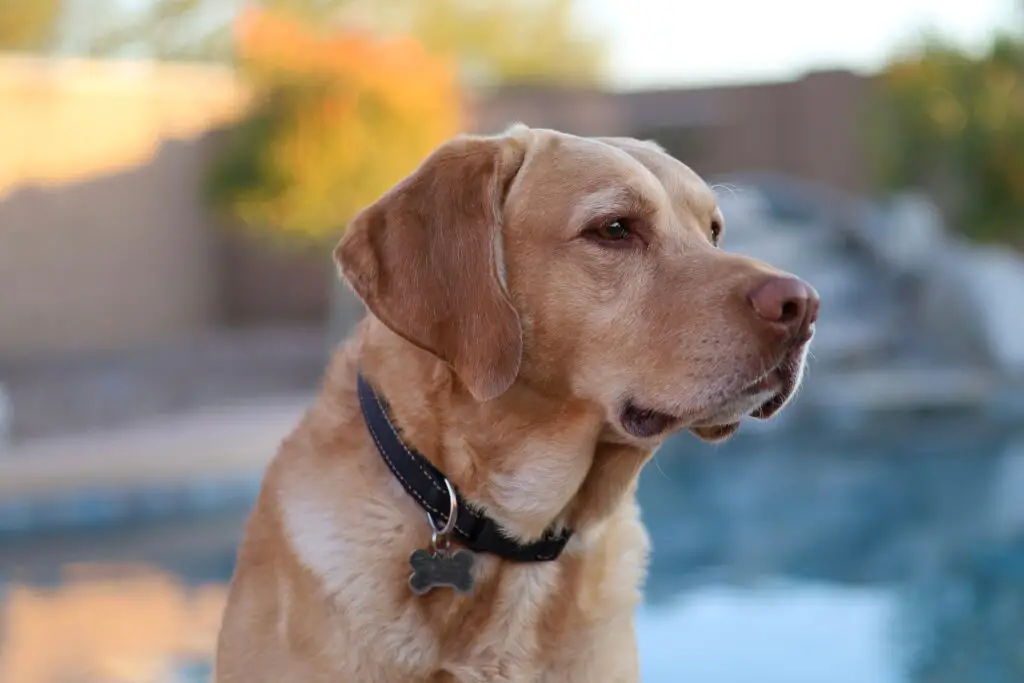
Labrador Retrievers, originally bred in Newfoundland, Canada, have consistently topped the American Kennel Club’s most popular breed list for years. These versatile dogs were initially developed to assist fishermen, retrieving nets and escaped fish from icy waters. Their webbed toes, water-resistant double coat, and otter-like tail make them exceptional swimmers. Labs are renowned for their friendly demeanor, intelligence, and eagerness to please, which contributes to their success in various roles, from family companions to service dogs and search-and-rescue workers.
These energetic dogs require plenty of exercise and mental stimulation to prevent boredom and destructive behavior. Labs are known for their “food motivation,” which can make training easier but also puts them at risk for obesity if not properly managed. Interestingly, a genetic study published by the University of Cambridge found that chocolate Labs tend to have shorter lifespans than their black and yellow counterparts. Despite their generally healthy nature, Labs can be prone to hip and elbow dysplasia, as well as certain eye conditions. With proper care and regular exercise, these loyal companions typically live 10-12 years.
Golden Retriever
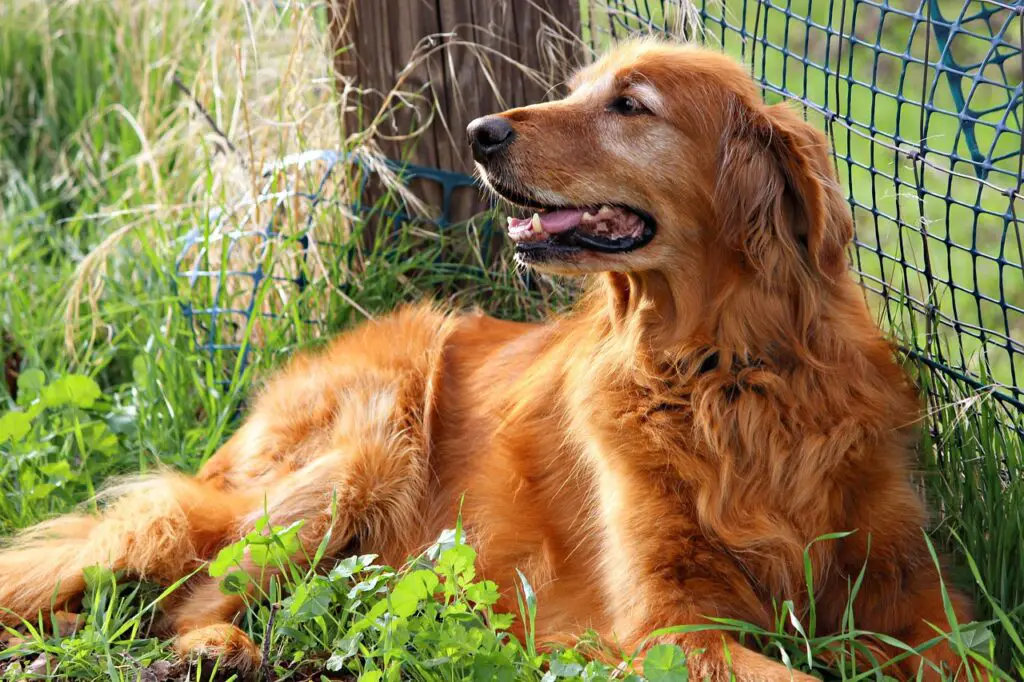
Golden Retrievers, developed in Scotland during the mid-19th century, were bred by Lord Tweedmouth to be the ideal gundog. These dogs are known for their lustrous golden coats, which can range from light cream to deep gold, and their friendly, patient dispositions. Goldens excel in various activities, including obedience, agility, and therapy work. Their intelligence and eagerness to please make them highly trainable, while their gentle nature makes them excellent family dogs, particularly with children.
Like their Labrador cousins, Golden Retrievers require regular exercise and mental stimulation. They’re known for retaining their puppy-like playfulness well into adulthood, often carrying toys or other objects in their mouths. Goldens are prone to certain health issues, including hip dysplasia, certain cancers, and eye problems. Regular grooming is essential to maintain their beautiful coats and prevent matting. An interesting fact: the oldest known Golden Retriever, August, lived to be 20 years old, far surpassing the breed’s typical 10-12 year lifespan. Golden Retrievers have also been known to exhibit a unique behavior called “soft mouth,” where they can carry an egg in their mouth without breaking it.
Cavalier King Charles Spaniel
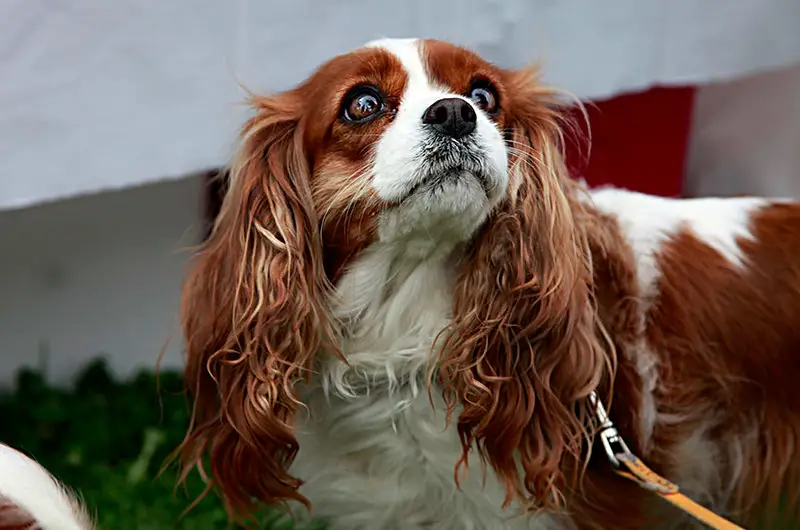
The Cavalier King Charles Spaniel, named after King Charles II of England, has a rich history dating back to the Renaissance. These small, affectionate dogs were favorites of royalty and nobility, often featured in paintings from the 16th to 18th centuries. The breed nearly went extinct in the 1920s but was revived by dedicated breeders. Cavaliers are known for their large, expressive eyes, silky coats, and gentle dispositions. They come in four color variations: Blenheim (chestnut and white), tricolor (black, white, and tan), ruby, and black and tan.
Despite their royal heritage, Cavaliers are adaptable and content in various living situations. They’re known for their “velcro dog” tendencies, often following their owners from room to room. While generally healthy, the breed is prone to certain genetic health issues, including mitral valve disease and syringomyelia. Cavaliers excel in therapy work due to their calm and affectionate nature. An interesting fact: in the 17th century, these dogs were believed to have healing powers and were often used as “comfort dogs” to draw fleas away from their noble owners. Today, they continue to charm with their sweet personalities and make excellent companions for first-time dog owners.
Poodle
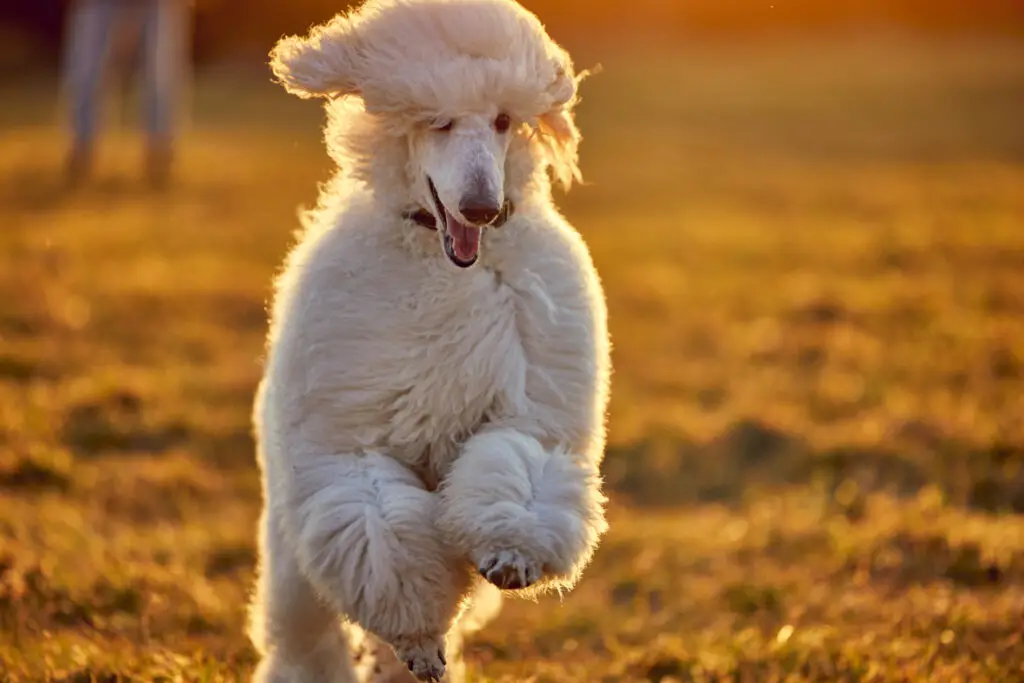
Poodles, contrary to their association with French aristocracy, actually originated in Germany as water retrievers. Their name comes from the German word “pudel,” meaning “to splash in water.” Available in three sizes (Standard, Miniature, and Toy), Poodles are renowned for their intelligence, ranking second in Stanley Coren’s “The Intelligence of Dogs.” Their hypoallergenic, continuously growing coat requires regular grooming, with the distinctive “Poodle clip” originally designed to protect vital areas while allowing the dog to move freely in water.
These versatile dogs excel in various activities, from obedience and agility to circus performances. Poodles are known for their playful nature and love of learning, making them ideal for owners who enjoy teaching tricks and providing mental stimulation. Despite their reputation for being high-maintenance, Poodles are actually quite athletic and enjoy outdoor activities. They have a lifespan of 12-15 years and are generally healthy, though they can be prone to hip dysplasia and certain eye conditions. An interesting fact: during World War II, Poodles were used as military dogs due to their intelligence and trainability.
Greyhound
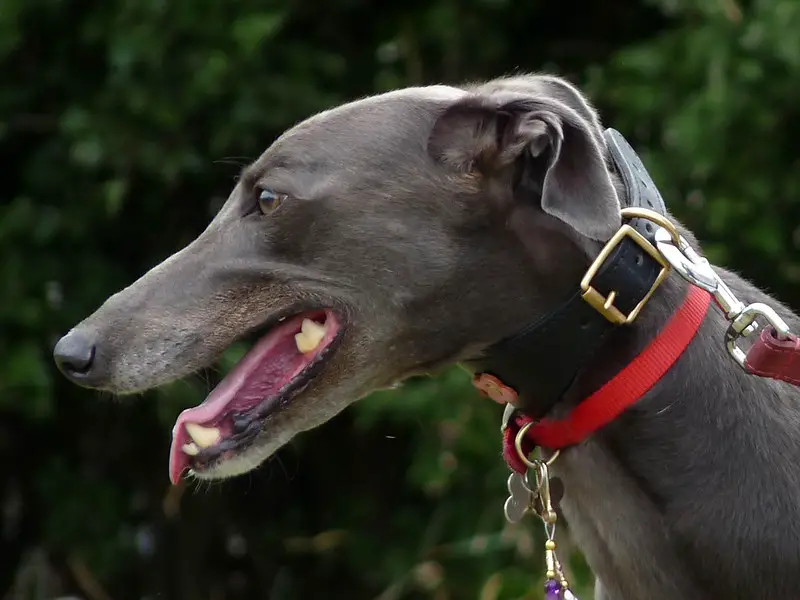
Greyhounds, one of the oldest dog breeds, have a history dating back over 4,000 years to ancient Egypt. Despite their reputation as racing dogs, Greyhounds are actually calm and gentle companions, often referred to as “40 mph couch potatoes.” These sleek, aerodynamic dogs can reach speeds of up to 45 mph, making them the fastest dog breed. Their unique body structure, including a deep chest and flexible spine, contributes to their incredible speed and agility.
Contrary to popular belief, Greyhounds don’t require extensive exercise. A daily walk and occasional sprint are usually sufficient to keep them happy and healthy. They have a short, low-shedding coat that requires minimal grooming. Greyhounds are known for their sweet and docile nature, making them excellent apartment dogs despite their size. They typically have a lifespan of 10-13 years. An interesting fact: Greyhounds have a higher percentage of fast-twitch muscle fibers compared to other breeds, contributing to their incredible speed. However, they’re also prone to certain health issues, including bloat and osteosarcoma. Many Greyhounds available for adoption are retired racing dogs, offering a second chance at a loving home life.
Bichon Frise
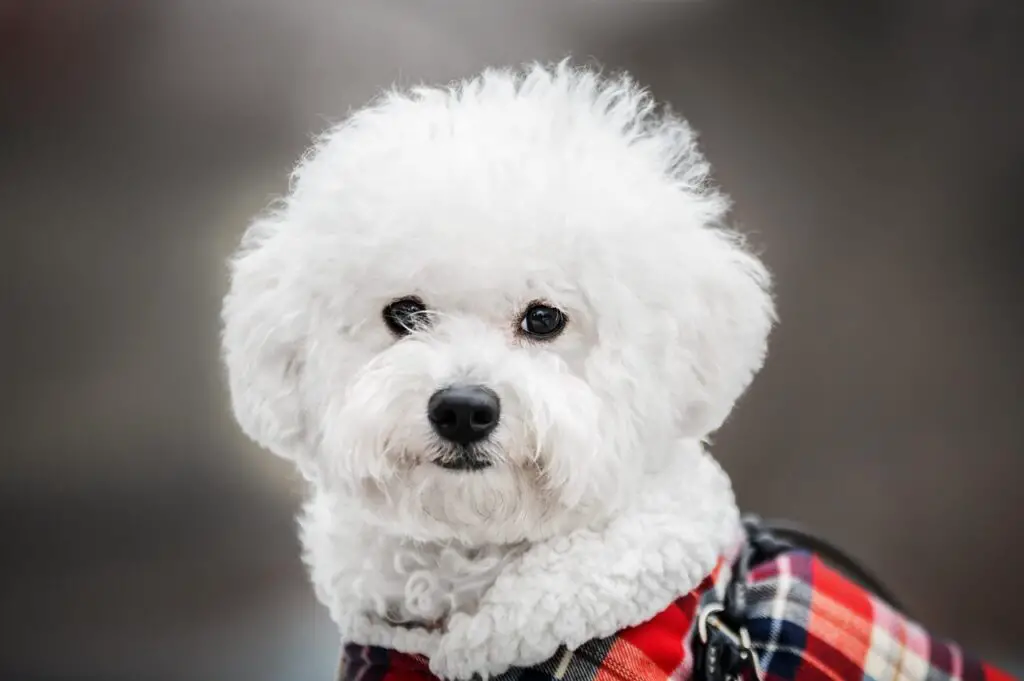
The Bichon Frise, whose name means “curly lap dog” in French, has a history dating back to the 13th century. Originally bred as sailing companions and circus performers, these cheerful little dogs have charmed their way into hearts for centuries. Known for their fluffy white coats and black button eyes, Bichons resemble animated cotton balls. Their hypoallergenic coat requires regular grooming to maintain its signature poufy appearance. Bichons are known for their merry temperament and love of play, often retaining their puppy-like behavior well into adulthood.
These small dogs are adaptable to various living situations and are excellent for apartment dwellers. Bichons are intelligent and respond well to positive reinforcement training, though they can be somewhat challenging to housebreak. They typically live 14-15 years and are generally healthy, though they can be prone to allergies and certain eye problems. An interesting fact: Bichons were once popular with Spanish sailors, who used them as barter items in their travels. This contributed to the breed’s spread across Europe. Despite their small size, Bichons are sturdy dogs and can be good with children when properly socialized.
Boxer
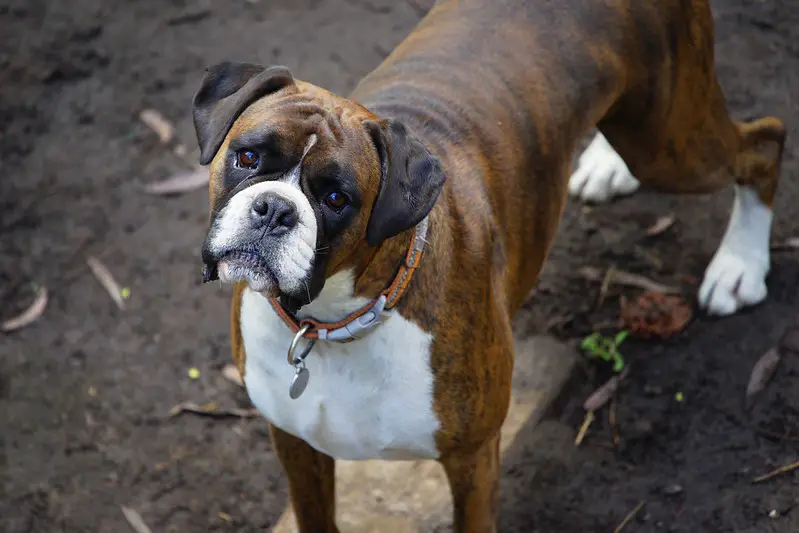
Boxers, developed in Germany in the late 19th century, were originally bred for bull-baiting and later as working dogs. Their name comes from their tendency to stand on their hind legs and “box” with their front paws during play. These medium-sized dogs are known for their strong, muscular build and distinctive pushed-in nose. Boxers have a short, smooth coat that comes in fawn or brindle, often with white markings. They’re known for their playful and energetic nature, often described as the “Peter Pan” of dog breeds due to their slow maturation and puppy-like behavior well into adulthood.
Despite their sometimes imposing appearance, Boxers are gentle and patient with children, making them excellent family dogs. They require regular exercise and mental stimulation to prevent boredom and destructive behavior. Boxers are intelligent and respond well to positive reinforcement training, though they can be stubborn at times. They typically live 10-12 years and are generally healthy, though they can be prone to certain cancers and heart conditions. An interesting fact: Boxers were among the first breeds used as police dogs in Germany. Their protective nature and loyalty make them excellent guard dogs, but they’re also known for their goofy personalities and love of play.
Papillon
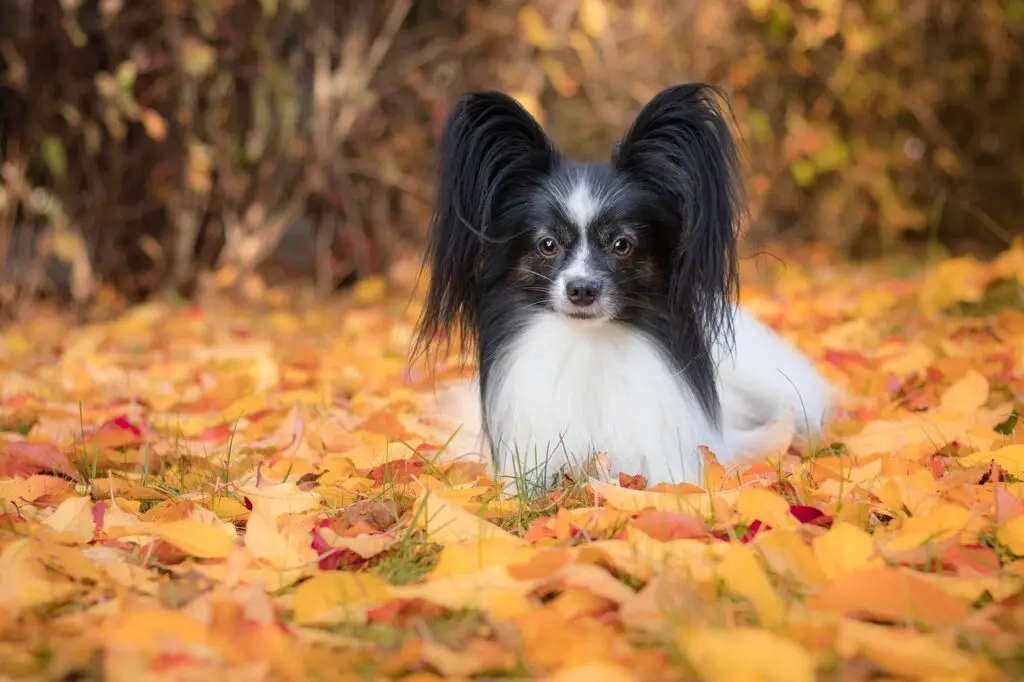
The Papillon, whose name means “butterfly” in French due to their distinctive ear shape, has a history dating back to the Renaissance. These small, elegant dogs were favorites of European royalty and are often seen in paintings from the 16th century onwards. Despite their delicate appearance, Papillons are surprisingly robust and energetic. They come in two varieties: the erect-eared Papillon and the drop-eared Phalène. Their silky coat comes in various colors, always with white as the predominant color.
Papillons are known for their intelligence and trainability, often excelling in obedience and agility competitions. They’re one of the most intelligent toy breeds, ranking 8th in Stanley Coren’s “The Intelligence of Dogs.” Despite their small size, Papillons have a big personality and are not typically “yappy” like some small breeds. They generally live 12-16 years and are relatively healthy, though they can be prone to patellar luxation and certain eye conditions. An interesting fact: Marie Antoinette was said to have walked to the guillotine clutching her beloved Papillon. While this story is likely apocryphal, it illustrates the breed’s long association with royalty and nobility.
Bernese Mountain Dog

The Bernese Mountain Dog, originating from the Swiss Alps, has a history dating back to the Roman invasion of Switzerland. These large, sturdy dogs were bred as farm dogs, used for drafting, droving, and guarding. Known for their distinctive tricolor coat of black, white, and rust, Bernese Mountain Dogs are gentle giants with a calm and patient temperament. Their thick, double coat requires regular grooming, especially during shedding seasons.
Despite their size, Bernese Mountain Dogs are known for their gentle nature and are often referred to as “nanny dogs” due to their patience with children. They have a moderate energy level and enjoy outdoor activities, particularly in cooler weather. Bernese Mountain Dogs are intelligent and eager to please, making them relatively easy to train. However, they have a relatively short lifespan of 6-8 years and are prone to certain health issues, including hip dysplasia and certain cancers. An interesting fact: In Switzerland, these dogs were traditionally used to pull carts of cheese and milk from farms to markets, a task they still perform in some alpine villages today.
Shih Tzu
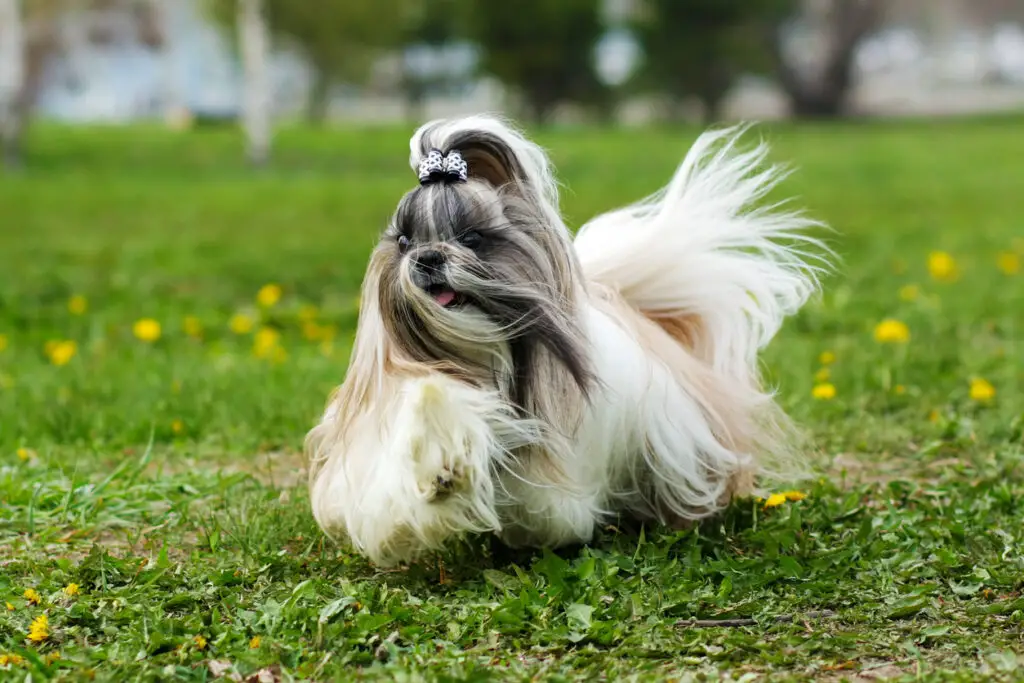
The Shih Tzu, whose name means “lion dog” in Chinese, has a history steeped in Chinese royalty dating back over 1,000 years. These small, affectionate dogs were bred to be companions and were so valued that for years, they were only owned by members of the Chinese royal family. Shih Tzus are known for their long, silky coat and distinctive underbite, giving them a unique and charming appearance. Their coat comes in a variety of colors and patterns and requires daily grooming to prevent matting.
Despite their royal heritage, Shih Tzus are adaptable and make excellent apartment dogs. They have a moderate energy level and are content with short walks and indoor play. Shih Tzus are known for their friendly and outgoing nature, often described as being “born to love and to be loved.” They typically live 10-16 years and are generally healthy, though they can be prone to certain eye problems and respiratory issues due to their flat faces. An interesting fact: During the Cultural Revolution in China, many Shih Tzus were destroyed as symbols of bourgeois decadence. The breed was saved from extinction by breeders in other countries, particularly in England and Norway
Yorkshire Terrier
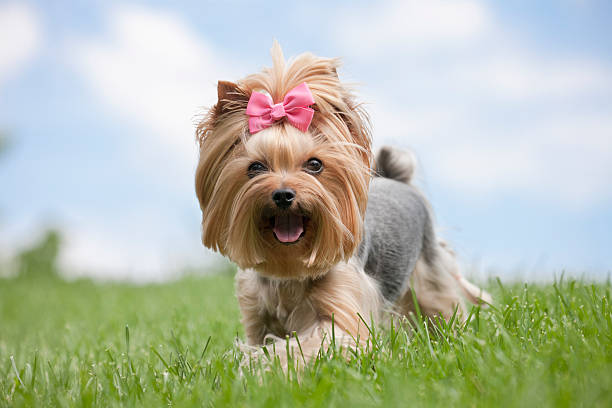
Yorkshire Terriers, affectionately known as “Yorkies,” were developed in 19th century England during the Industrial Revolution. Originally bred to catch rats in clothing mills, these small but feisty dogs quickly became popular companions for working-class families. Despite their diminutive size, Yorkies retain the bold and tenacious spirit of their terrier ancestors. Their long, silky coat, which is more hair-like than fur, comes in a variety of colors but is most commonly steel blue and tan.
Yorkies are known for their big personalities in small packages. They’re intelligent, curious, and can be quite vocal, making them excellent watchdogs. Despite their small size, they require regular exercise and mental stimulation. Yorkies are generally healthy with a lifespan of 13-16 years, though they can be prone to dental issues and patellar luxation. Their coat requires daily grooming to prevent tangles and matting. An interesting fact: During World War II, a Yorkie named Smoky became a war hero, running a communication cable through a 70-foot-long pipe, thus helping to save the lives of many soldiers. This brave little dog also served as one of the first therapy dogs, visiting wounded soldiers in hospitals.
French Bulldog
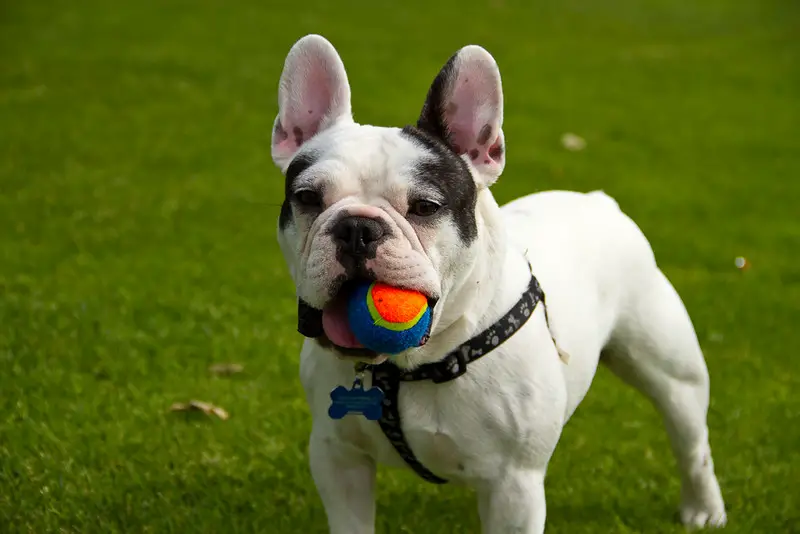
French Bulldogs, despite their name, were actually developed in England in the 1800s as miniature versions of the English Bulldog. They became popular with lace workers in Nottingham, who brought the breed with them when they migrated to France during the Industrial Revolution. This is where they earned their “French” moniker. Known for their distinctive “bat ears” and wrinkled faces, Frenchies have a muscular build and a smooth, short coat that comes in various colors.
Frenchies are known for their affectionate and playful nature, often described as “clowns in the cloak of a philosopher.” They’re adaptable to various living situations and don’t require extensive exercise, making them popular with city dwellers. However, due to their brachycephalic (flat-faced) structure, they can be prone to breathing difficulties and overheating. Frenchies typically live 10-12 years and can be prone to certain health issues, including spinal problems and allergies. An interesting fact: French Bulldogs can’t swim due to their body structure and heavy bones, so extra caution is needed around water. Despite their challenges, Frenchies have become one of the most popular dog breeds worldwide, known for their charming personalities and loyal companionship.
Pug
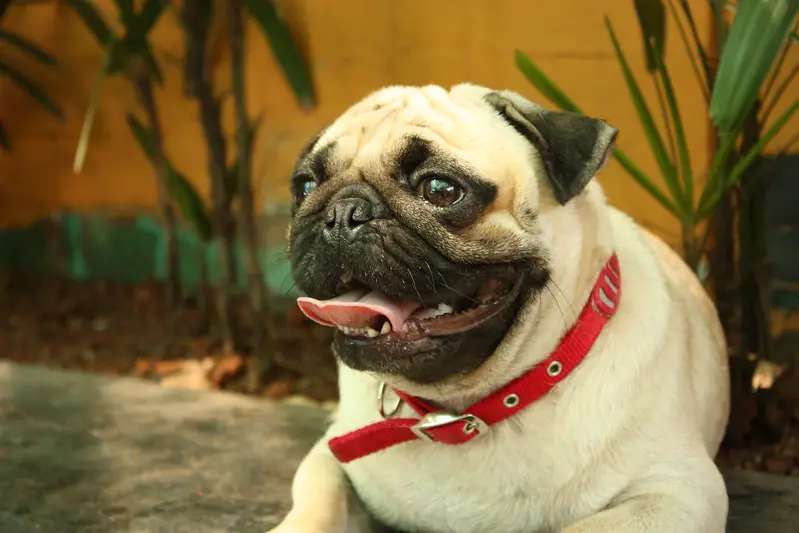
Pugs, with their distinctive wrinkled faces and curly tails, have a history dating back over 2,000 years to ancient China. Originally bred as companions for Chinese emperors, Pugs were highly valued and often given as gifts to foreign rulers. Their name is thought to come from the Latin word “pugnus,” meaning fist, possibly due to their facial resemblance to a clenched fist. Pugs come in fawn or black colors and are known for their smooth, short coats and compact, muscular bodies.
These small dogs are known for their charming and mischievous personalities, often described as “a lot of dog in a small space.” Pugs are adaptable and do well in various living situations, including apartments. They have a moderate energy level and enjoy short walks and playtime, but due to their brachycephalic nature, they can be prone to overheating and breathing difficulties. Pugs typically live 12-15 years and can be prone to certain health issues, including eye problems and obesity. An interesting fact: The wrinkles on a Pug’s forehead were prized by Chinese breeders because they resembled the Chinese character for “prince.” Pugs are also known for their expressive faces and ability to convey a wide range of emotions, making them popular subjects in memes and social media.
Maltese

The Maltese, one of the oldest toy breeds, has a history dating back over 2,000 years to the island of Malta in the Mediterranean. These small, elegant dogs were highly prized by ancient civilizations, including the Greeks, Romans, and Egyptians. Known for their long, silky white coats, Maltese were often associated with royalty and nobility. Their coat, which is hair rather than fur, doesn’t shed much but requires daily grooming to prevent matting and tangles.
Maltese are known for their gentle and affectionate nature, often forming strong bonds with their owners. Despite their small size, they can be quite fearless and make excellent watchdogs. Maltese are intelligent and respond well to positive reinforcement training, though they can be somewhat challenging to housebreak. They typically live 12-15 years and are generally healthy, though they can be prone to dental issues and certain eye problems. An interesting fact: In ancient times, some people believed Maltese had healing powers and would place them on the pillows of ill people to cure them. Today, Maltese excel as therapy dogs due to their gentle nature and small size, bringing comfort to people in hospitals and nursing homes.
Beagle

Beagles, with their floppy ears and soulful eyes, have a history dating back to Roman times, though the modern breed was developed in Great Britain in the 1830s. Originally bred for hunting rabbits and hares, Beagles have an exceptional sense of smell, second only to the Bloodhound in the dog world. These medium-sized dogs are known for their tricolor coat (typically black, tan, and white) and their melodious howl, often referred to as a “bay.” Beagles are friendly, curious, and merry, making them excellent family dogs and popular companions.
Despite their hunting background, Beagles adapt well to various living situations, though they do require regular exercise to prevent boredom and weight gain. They’re intelligent but can be stubborn, which can make training a challenge. Beagles have a strong prey drive and may follow their noses, so secure fencing is important. They typically live 10-15 years and are generally healthy, though they can be prone to certain eye problems and hip dysplasia. An interesting fact: NASA has used Beagles in research due to their calm temperament and keen sense of smell. The “Beagle Brigade” of the U.S. Department of Agriculture also uses these dogs to detect contraband food items in airports, showcasing their incredible scenting abilities in a modern context.


